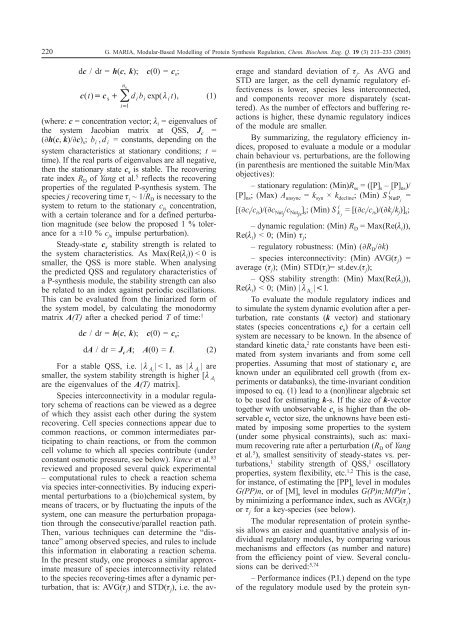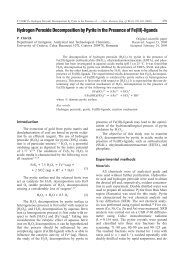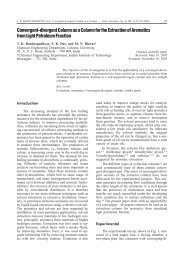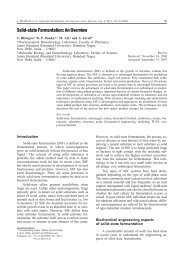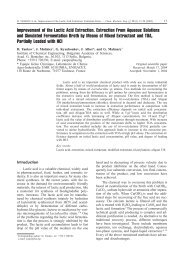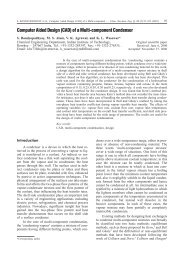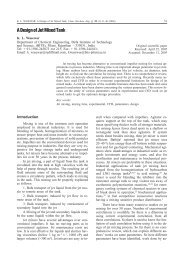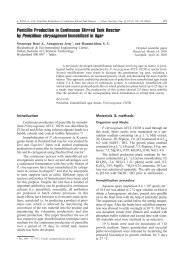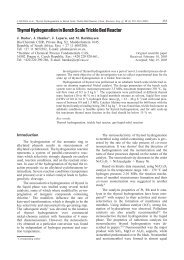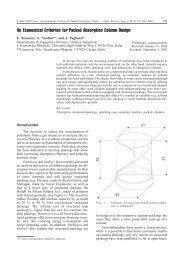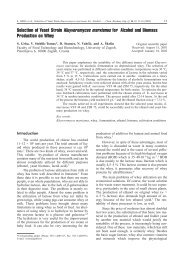Modular-Based Modelling of Protein Synthesis Regulation
Modular-Based Modelling of Protein Synthesis Regulation
Modular-Based Modelling of Protein Synthesis Regulation
Create successful ePaper yourself
Turn your PDF publications into a flip-book with our unique Google optimized e-Paper software.
220 G. MARIA, <strong>Modular</strong>-<strong>Based</strong> <strong>Modelling</strong> <strong>of</strong> <strong>Protein</strong> <strong>Synthesis</strong> <strong>Regulation</strong>, Chem. Biochem. Eng. Q. 19 (3) 213–233 (2005)<br />
dc /dt = h(c, k); c(0) = c s ;<br />
n<br />
<br />
c() t c<br />
d b exp( t),<br />
s<br />
s<br />
i1<br />
i i i<br />
(1)<br />
(where: c = concentration vector; i = eigenvalues <strong>of</strong><br />
the system Jacobian matrix at QSS, J c =<br />
(h(c, k)/c) s ; bi, di<br />
= constants, depending on the<br />
system characteristics at stationary conditions; t =<br />
time). If the real parts <strong>of</strong> eigenvalues are all negative,<br />
then the stationary state c s is stable. The recovering<br />
rate index R D <strong>of</strong> Yang et al. 5 reflects the recovering<br />
properties <strong>of</strong> the regulated P-synthesis system. The<br />
species j recovering time j ~1/R D is necessary to the<br />
system to return to the stationary c js concentration,<br />
with a certain tolerance and for a defined perturbation<br />
magnitude (see below the proposed 1 % tolerance<br />
for a ±10 % c js impulse perturbation).<br />
Steady-state c s stability strength is related to<br />
the system characteristics. As Max(Re( i ))


